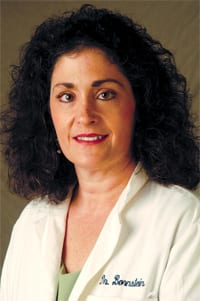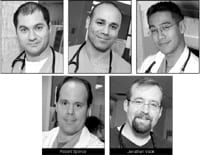AMA Announces CPT Code Changes for 2013
CHICAGO — The American Medical Assoc. (AMA) announced the culmination of the medical industry’s annual effort to capture and describe the latest scientific advances in medical, surgical, and diagnostic services with the public release of the 2013 Current Procedural Terminology (CPT) code set. The new code set should be used for claims filed as of Jan. 1, 2013.
“Medical knowledge is constantly advancing, and as steward of CPT, the AMA invests extensive resources each year to keep the code set current with contemporary medical science and technology so it can fulfill its vital role as the health system’s universal language for reporting medical procedures,” said AMA President Dr. Jeremy Lazarus.
One of the largest recent expansions to the CPT code set was the result of significant advancements in understanding and testing for the molecular basis of disease, including the Human Genome Project. In response to the incredible potential offered by this scientific progress, new CPT codes for molecular pathology tests first appeared in 2012, and the evolving process has resulted in the creation of 116 molecular-pathology codes available in the 2013 CPT code set. The new codes will enhance the reporting of innovative diagnostic tools now available to advance medicine’s overarching goal of reducing disease burdens, improving health outcomes, and reducing long-term care costs. Additional CPT enhancements for 2013 reflect physician-practice changes and technology improvements in cardiology, neurologic testing, and psychiatry.
“Ensuring that CPT codes accurately reflect the medical care provided to patients is only possible through the dedication and direct input of practicing physicians, allied health professionals, and advisors from more than 100 medical specialty societies,” said Lazarus. “Tapping into the clinical expertise of the healthcare community produces the practical enhancements that CPT needs to reflect the coding demands of the modern healthcare system.”
Broad input from the healthcare community has allowed CPT to better support the reporting needs of physicians and others participating in emerging models of care, such as a patient-centered medical home, accountable-care organizations, and other novel integrated delivery systems.
The CPT changes better capture the work involved in managing patients with complex chronic conditions within one of the new integrated delivery systems. While codes for some of these care-coordination services were already available, the new care-coordination codes for 2013 allow medical practices to efficiently report time spent connecting patients to community services, transitioning them from inpatient to other settings, and preventing readmissions. These are all critical components of improving health outcomes and reducing healthcare-system costs.
“The newest edition of the CPT code set is a good example of how the AMA and organized medicine are working jointly in summarizing complicated medical services with a simple five-digit numeric code,” said Lazarus. “Prior to CPT’s universal adoption in 1983, the healthcare system struggled to cope with multiple code sets for reporting procedures, most of which had inadequate input from the medical profession. The American healthcare system has greatly benefited in the last 30 years by the creation and continual updating of CPT as the uniform standard for efficiently communicating vital information between physicians, hospitals, and health plans.”
The AMA invites the healthcare community to learn more about the significant changes to the 2013 CPT codes and descriptors by attending the CPT/RBRVS Symposium in Chicago on Nov. 14-16, 2012. For additional information, visit www.ama-assn.org/go/symposium



Comments are closed.